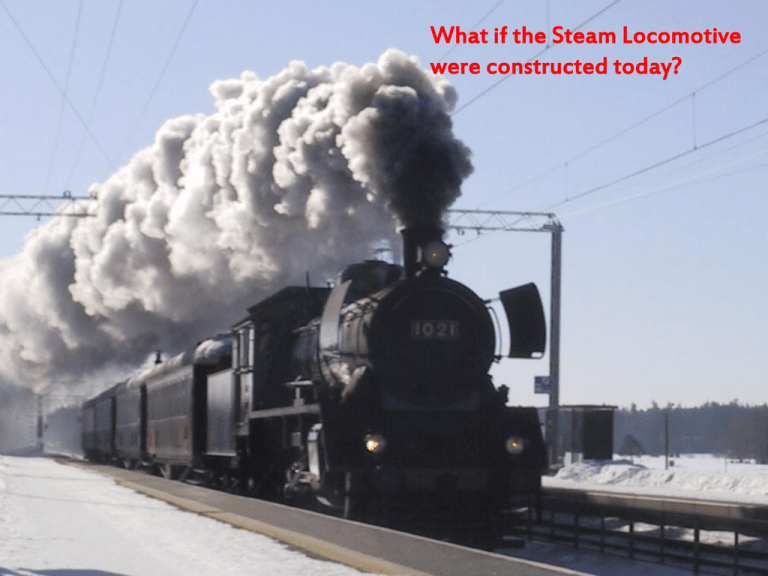What if the Steam Locomotive were constructed today?
advertisement

What if the Steam Locomotive were constructed today? Basic facts & assumptions 1. The classic - or conventional – steam is OUT 2. There are - and always will be - railways that never electrify for various reasons, e.g. - Costly infrastructure - Vulnerability of the catenary system - Benefits & flexibility of diesels 3. The use of fossile fuel will be restricted 4. Biopower is gaining ever more attraction 5. The state-of-art technology in power plant engineering, as well as in electric & electronic industry, has greatly advanced since the days of the conventional steam locomotive. POWER RANGE NUCLEAR POWER DIESEL/ ELECTRIC CONVENTIONAL STEAM FUEL CELL Present time TIME FRAME Energy balance of a classical steam locomotive To be realistic, a steam locomotive should: - Be comparable to diesels in efficiency - Be free of operational handicaps, like slippage, heavy construction, ergonomical problems, need of turning, crew demands, emissions etc. - Be compatible with other types of motive power, as regards multi-unit operation and service facilities excluding only the steamspecific operations (fuelling and cleaning) ACE3000; Proposed Steam Locomotive American Coal Enterprises 3000 hp continuous power Drawings as presented in the Model Railroader Magazine, June 1982 Steam turbine direct drive; Grängesberg-Oxelösund RR ca. 1935-1955 Case Study of Steam Turbine Electric Locomotives • In 1938; GE built a test engine for the UP • !n 1947-49, Baldwin-Westinghouse built 3 units for the Chesapeake&Ohio Railroad • In 1954, Baldwin-Lima-Hamilton + Westinghouse and Babcock&Wilcox built a test engine for the Norfolk&Western RR; tests lasted until the end of 1957 The General Electric Steam Turbine Locomotive; tested by Union Pacific and Northern Pacific Railroads between 1938-44 A high pressure, water tube type, condensing, oil fired Babcock&Wilcox boiler The Chesapeake&Ohio Railroad Steam Turbine Loco (1949) Non-condensing, Coal fired, fire tube Boiler The Norfolk&Western RR Steam Turbine Locomotive, tested between 1954-57 (non-condensing) TE-1 Kokoonpanoa Functional Sketch for a Biopowered, fully condensing Steam Turbine Electric Locomotive - High pressure, closed circuit WATER TUBE boiler - Steam turbine driven generator unit - Traction motors on each axle - Heat recovery of cooling air & flue gases - (eventual oxyfuel burning process in future) A B Hs 1 140 km/h A B A-A B-B Light weight, self-supporting frame construction G G = 50-60 t G What is novel? • Completely oil free, compact steam turbine generator unit (dual unit execution) • Fully automated, wood burning combustion process • Light weight construction • Modular design includes common parts with existing diesel/electric locos • Low emission level • One man, bi-directional operation • Multiple unit operation with any kind of motive power is possible Thank you for your attention!





